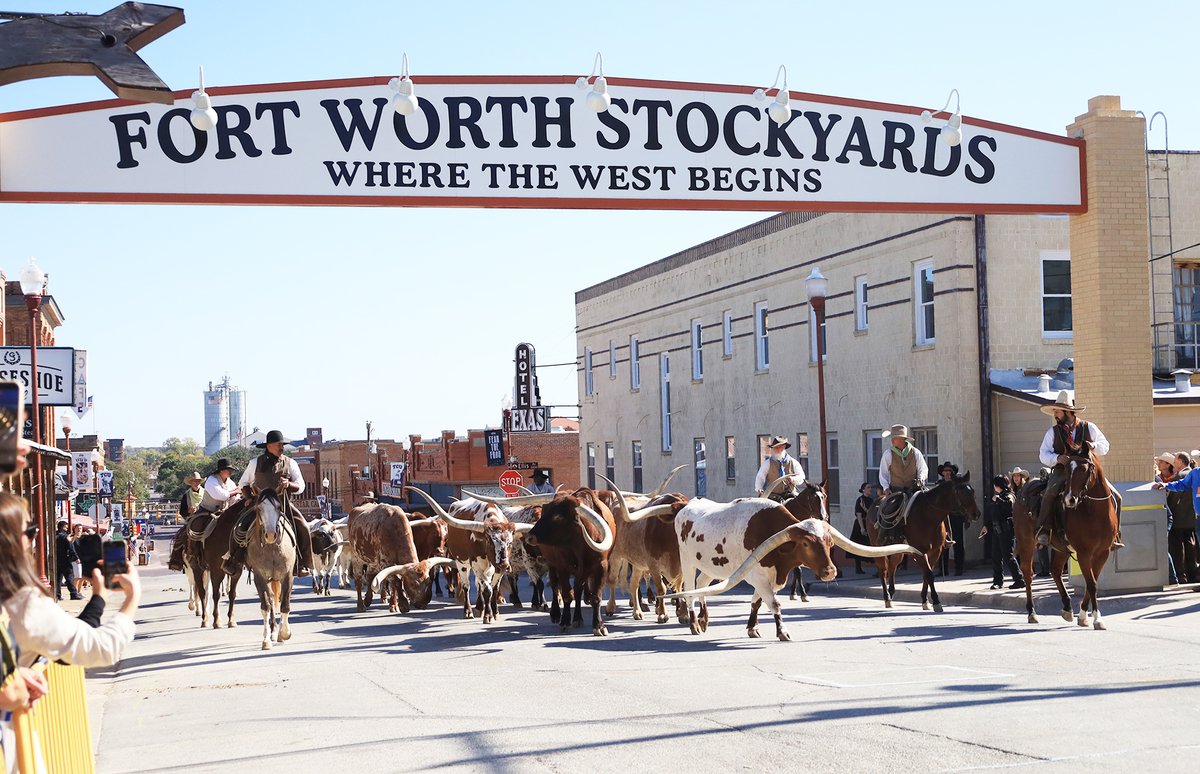The Fort Worth Herd stopped traffic on Nov. 12, as they clopped down West Exchange Avenue and passed beneath the new Fort Worth Stockyards sign. For the first time in city history, the living symbols of the Stockyards marked the western gateway, turning a quieter stretch of the district into the center of attention. What had long been overlooked suddenly felt official, celebrated, and unmistakably a part of Cowtown.
Ruth Hooker, owner of Hooker’s Grill, stood at the base of the sign, beaming. “I opened this restaurant about nine years ago because I wanted to be in the Stockyards,” she told the crowd. “But I didn’t realize not everyone knew this was the Stockyards. So here’s your sign, people.” Her humor drew laughter, but the message was serious: West Exchange Avenue had earned its recognition.
The idea for the sing grew out of frustration and grew into a six-year passion project. Hooker navigated city regulations, preservation committees, and local architects to create a gateway that would officially mark the district’s western boundary. The project relied on a collaboration of city officials, neighbors, and builders — all working to give West Exchange a landmark worthy of its heritage.
Council member Carlos Flores — who represents the district where the Stockyards are located — praised the effort, calling the sign “a marker that points the way — but also gives West Exchange its own identity.” He highlighted the teamwork behind the project, from Hooker to architect Arthur Weinman. Construction was handled by Michael Smith of Marathon Commercial Construction LLC, with project management by Paul Paine of Fort Worth Stockyards Inc. “It’s more than a directional sign,” Flores said. “It signals that something special is happening here.”
The morning began with a traditional Native American blessing by Eddie Sandoval, who recalled the Pioneer Days when the streets hosted flatbed trailer dances. “It makes me feel good because that’s what it’s all about,” he said, waving sage through the crisp fall air.
Mayor Mattie Parker emphasized the symbolic weight of the new landmark. “This represents the connection and possibility of the Stockyards — one foot in the past and one foot in the future,” she said.
Weinman, whose family has shaped Fort Worth architecture for generations, described the sign’s brick columns and solid concrete bases as both durable and symbolic. “It’s more than just lettering across the street,” he said. “It gives the public a destination and anchors the character of West Exchange.”
Longtime Stockyards businessman Steve Murrin reflected on the transformation. “There’s no question it’ll increase traffic going west,” he said with a grin.
When the Fort Worth Herd finally passed beneath the new arch, hooves striking the brick like a drumbeat, it was clear that the western edge of the Stockyards had arrived. One woman’s vision had become a neighborhood landmark, giving the street its own stage and inviting visitors to explore what had long been overlooked.
“This was a neighborhood project,” Hooker said, watching the longhorns move on. “We hope it brings more people and energy to West Exchange.”
November 13, 2025
9:21 AM
